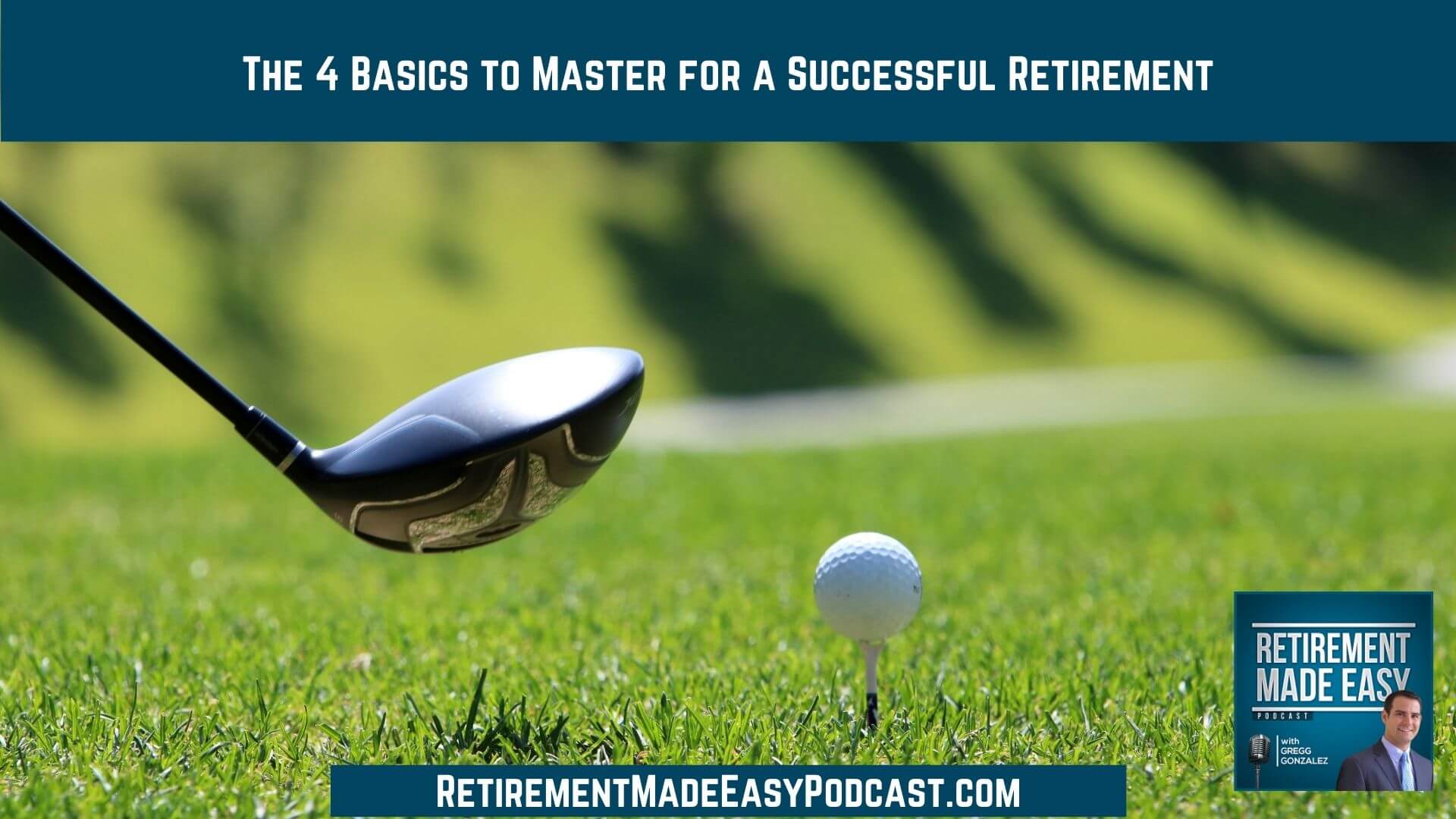
Davis Love III—a pro-golfer and PGA Champion—was interviewed years ago and asked, “How do you prepare for these tournaments?” He said, “When you see me play, everything looks natural….Day after day, Monday through Friday, preparing for a tournament, 95% of the time I work on the basics—the fundamentals of golf.” Every morning he’d practice the basics until he couldn’t get it wrong. You need to prepare for a successful retirement the same way: master the basics. Listen to this episode of Retirement Made Easy as I share the four basic strategies you need to master.
You will want to hear this episode if you are interested in…
- [1:51] It’s time to master the basics
- [3:22] Basic #1: Live below your means
- [6:47] Basic #2: Stay diversified
- [11:06] Basic #3: Create a retirement plan
- [14:14] Basic #4: Prepare for the unexpected
Basic #1: Live below your means
If you’re saving for retirement, you need to live on less than you make. Most people haven’t mastered this basic concept. According to the Federal Reserve, the average household credit card balance in America in 2020 was $6,270. While there were some extenuating circumstances in 2020, that’s certainly not living below your means (and the research including all household income levels).
Living below your means is the basic fundamental of personal finance and is worth carrying over into retirement. You need to get your spending under control with a rigid budget. Living on a disciplined and fixed income in retirement is based on the lifestyle you want to have. This is extremely important to nail down and stick to. You have to be careful and committed to stick to your allotted spending.
Basic #2: Stay diversified
Having a checking account, a savings account, and a money market account doesn’t mean you’re diversified. They are low-risk and low-return.
Let’s say you have an IRA or Roth IRA with mutual funds A, B, and C. But when you look at those mutual funds, they’re essentially the same. If you have a Granny Smith apple, a Fuji, and a Jonathan apple in a plastic bag—what happens when one apple rots? The other two will rot as well. It’s the same thing when you’re invested in the same mutual funds.
Why do women own so many pairs of shoes? They have heels, flats, tennis shoes, sandals, rain boots, etc. for all different situations. Women are masters of diversification. Your portfolio should have different investment pieces with different jobs—just like a woman’s shoe closet. You need to spread out your risk.
Basic #3: Create a retirement plan
Just like you shouldn’t go to a grocery store without a grocery list, you can’t retire without a plan. Your grocery list makes sure you get everything you’re looking for.
If you ask a pilot if they have a flight plan, they all say “Yes.” They base it on when takeoff and landing are, on the conditions, the wind, the weather, etc. They plan for contingencies. They will also tell you that very few flights go exactly as planned. They must be adjusted and tweaked as they go—but they still need that original plan to judge where they’re going.
A retirement plan gives you the most efficient route from point A to point B. It keeps you on course. According to Rich Habits – The Daily Success Habits of Wealthy Individuals, 81% of millionaires created daily to-do lists but only 19% of non-millionaires had daily to-do lists. Where do you want to land?
Basic #4: Prepare for the unexpected
Life never goes as we expect or plan. I recommend that you be prepared for those what-ifs. If you can’t work as long as planned, a loved one dies, or your pension dollars get cut—what will you do? What if you retire in the middle of a recession or a dip in the market?
What if your cost of living doubles or triples? It will likely happen. A $4 box of cheerios in your first year of retirement could cost you over $9 in your 3rd year of retirement—just from a 2.9% annual inflation rate. Life always gives us changes and we must be ready to pivot.
My 89-year-old grandmother retired 25 years ago. If I had told her then that in 25 years her monthly cost for long-term care would be over $8,500, she’d think I’d lost my mind. But the costs 25 years ago weren’t anywhere near this amount. What is the cost of that same care 25+ years from now? It’ll cost far more than now. These are the types of things you can’t let take you by surprise.
Resources & People Mentioned
- BOOK: Rich Habits
- Davis Love III
- The Federal Reserve
Connect With Gregg Gonzalez
- Email at: Gregg@RetireSTL.com
- Podcast: https://RetirementMadeEasyPodcast.com
- Website: https://StLouisFinancialAdvisor.com
- Follow Gregg on LinkedIn
- Follow Gregg on Facebook
- Follow Gregg on YouTube



